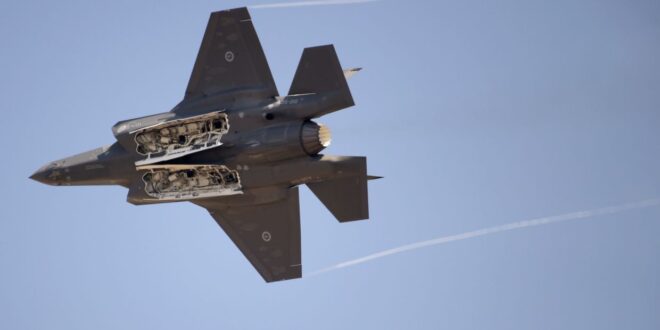WASHINGTON: The world’s costliest weapons programme, Lockheed Martin Corp’s F-35 fighter jet, is getting even more expensive, according to a government watchdog.
Nine years after the Marine Corps declared its first F-35s operational, the Pentagon now projects that the cost of operating and maintaining the jet through 2088 will be US$1.58 trillion, 44% higher than originally forecast in 2018, the Government Accountability Office (GAO) said on Monday in a new assessment.
It’s another troubling sign for the F-35, which is billed as the stealthiest and most advanced fighter jet ever and sits at the centre of US war planning.
Despite its high price tag and maintenance issues, the United States and several allied governments, including Israel, already fly hundreds of F-35’s, and it played an important role in helping repel a barrage of Iranian missiles and drones aimed at Israel over the weekend.
The F-35’s radar helped detect incoming Iranian drones in flight and passed information to ground units, according to an Israeli official, and the fighter jets also shot down drones.
The GAO reported a troubling picture of the plane’s readiness and said that inadequate training, a lack of spare parts and support equipment, and a heavy reliance on contractors mean all three services that deploy the jet – the Air Force, Marines and Navy – project they will be able to fly the F-35 less often than originally hoped.
“The F-35 fleet’s overall availability has trended downward considerably over the past five years, and none of the variants are meeting availability goals – the percentage of time the aircraft can perform one of its tasked missions,” according to the assessment.
“The F-35 fleet is not meeting most of its performance goals.”
Pentagon officials told auditors that “significant F-35 programme cost reductions will only come from flying the aircraft less or reducing the number of aircraft in the fleet”.
The Pentagon’s progress to improve readiness was to be probed yesterday during a hearing by a House Armed Services subcommittee.
Confronted with an overall readiness rate of 54% in March 2023, the Pentagon’s F-35 programme office convened a “War on Readiness” to increase the overall rate by 10% by last month.
Lieutenant General Michael Schmidt, the F-35 programme manager, said in a statement on Monday that as of March, the US fleet’s mission-capable rate averaged 55.7%, up slightly since last year’s hearing.
Since then, mission-capable rates have risen above the 64% target for short periods, “however, we have not yet sustained the levels of readiness our users expect”, Schmidt said.
“While these figures indicate only a slight improvement over the past year and these rates remain unacceptable,” the importance of the push to improve readiness “cannot be overstated”, he said.
The Pentagon last month declared the F-35 ready for full-rate production, a largely symbolic decision because Lockheed is already assembling the jets.
The United States now has 881 of its planned 2,456 planes on contract. The decision was delayed years beyond its most recent goal of April 2019, but the announcement may give some assurance to the nations committed to spending billions of dollars on the jet.
The new assessment indicates that the military has been trying for years, with little success, to make the F-35 less expensive to fly by squeezing efficiencies and reducing costs for spare parts and repair facilities.
One major driver of maintenance costs is the Pentagon’s heavy reliance on Lockheed for support, the GAO said.
The sustaining support cost element, which captures the most sustained costs associated with the contractor, is a large portion of the F-35.
The Pentagon “is seeking expanded government control over the programme to reduce programme costs and improve programme performance”, it said.
As of December, all three services that use the jet were falling well short of their performance goals.
Just 52% of the Air Force’s F-35A’s were considered partially mission-capable, short of the goal of 80%. For the Navy, that number was 62% compared to a goal of 75%, and the Marines reported similar numbers.
Lockheed said in a statement that it’s working with the Pentagon programme office “to address F-35 readiness degraders and implement solutions”. — Bloomberg
 BeritaKini.biz Berita Viral Terkini di Malaysia
BeritaKini.biz Berita Viral Terkini di Malaysia





